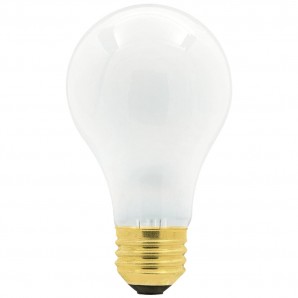 Many incandescent bulbs were phased out of both production and importation over the last couple years. These included bulbs used throughout homes and many offices -- the traditional A19 shape from 40 watts and up are no longer made or brought into the country for sale. You're only able to buy those that are left in stock. (While supplies last, ours are here.) This has upset a lot of people who love the atmosphere created by incandescent bulbs, or who may have other concerns about light bulb alternatives (like CFLs and LEDs). The fact is, replacement bulbs like these LEDs save you a ton of money by requiring far less energy (and therefore polluting less). Although they're more expensive up front, they do mimic the feel of an incandescent bulb quite well and can save you $5 or more per year in energy. This means the payback period can be under 2 years for bulbs used at least 2 hours a day. [2017 update: prices are now so low, many LEDs will pay for themselves in well under a year of use.] But some folks still aren't convinced and really want to continue using incandescent bulbs. Well if that's you, there's good news. Besides being able to buy whatever bulbs are still in stock, some incandescent bulbs were not included in the legislation -- so they're still being made and can still be purchased. This includes a group called "rough service" bulbs. Rough service bulbs are incandescent lights, and therefore they look and dim and act just like the bulbs you already love. They were excluded from the phase out because they're needed for special applications like those involving a lot of vibration. They are made to withstand voltage spikes and are given stronger filaments. While they do cost a little more than traditional incandescent bulbs, they also last about 3-5 times as long, usually more than making up for the extra cost. And you can expect to replace bulbs less often. Here's the trick to rough service bulbs: they're made as 130 volt bulbs, but in most if not all instances, you'll run them at closer to 120 volts in the U.S. This means they'll use less energy but also not burn as brightly as other incandescent bulbs showing the same wattage. So if you're replacing an incandescent bulb with a rough service bulb and you want to retain about the same amount of light, choose the next level of wattage. For instance, if you're replacing a 40 watt incandescent, choose a 50 watt rough service bulb. It should only use about 40 to 45 watts of energy and produce the light of a traditional 40 to 45 watt bulb. If you're replacing a 60 watt incandescent, choose a 75 watt rough service bulb. It should use the energy and produce the light of about a traditional 65 watt bulb. Alternately, if you don't mind a little less light in an area, choosing a rough service bulb at equal wattage to the bulb you're replacing lets you save some energy costs. So if you're missing your beloved incandescent light bulbs and wish legislation hadn't phased them out, fear not -- there are solutions. And at Lighting Supply, we'd love to help you get the bulbs you want, coupled with service and ongoing support when needed.
john
4/18/2017 09:51:36 pm
your wrong rough service bulbs last 50 times longer then regular bulbs 130 volt bulbs regular ones last twice as long.
Steve @ Lighting Supply
4/20/2017 11:10:15 am
Thanks for your feedback. This is why comments are useful to the whole readership! I think you mean "5 times longer," not 50. We have written elsewhere (http://www.lightingsupply.com/articles/rough-service-light-bulbs/) that they last 3-5 times as long, but we mis-wrote it here. We have corrected it now. Comments are closed.
|
This blog's content is copyright © 2014-19 Lighting Supply.
